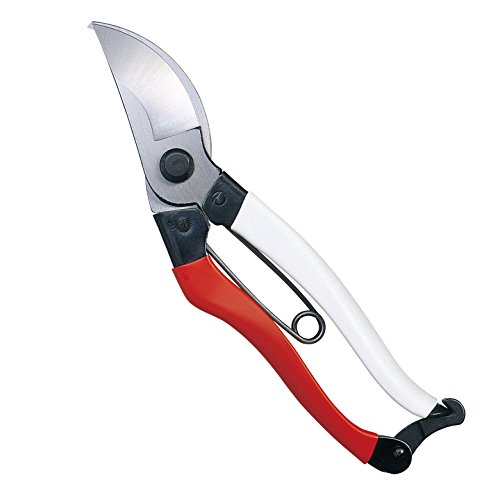When to prune mophead hydrangeas – and why a light touch goes a long way
Know when and how to prune mophead hydrangeas for fantastic blooms every summer

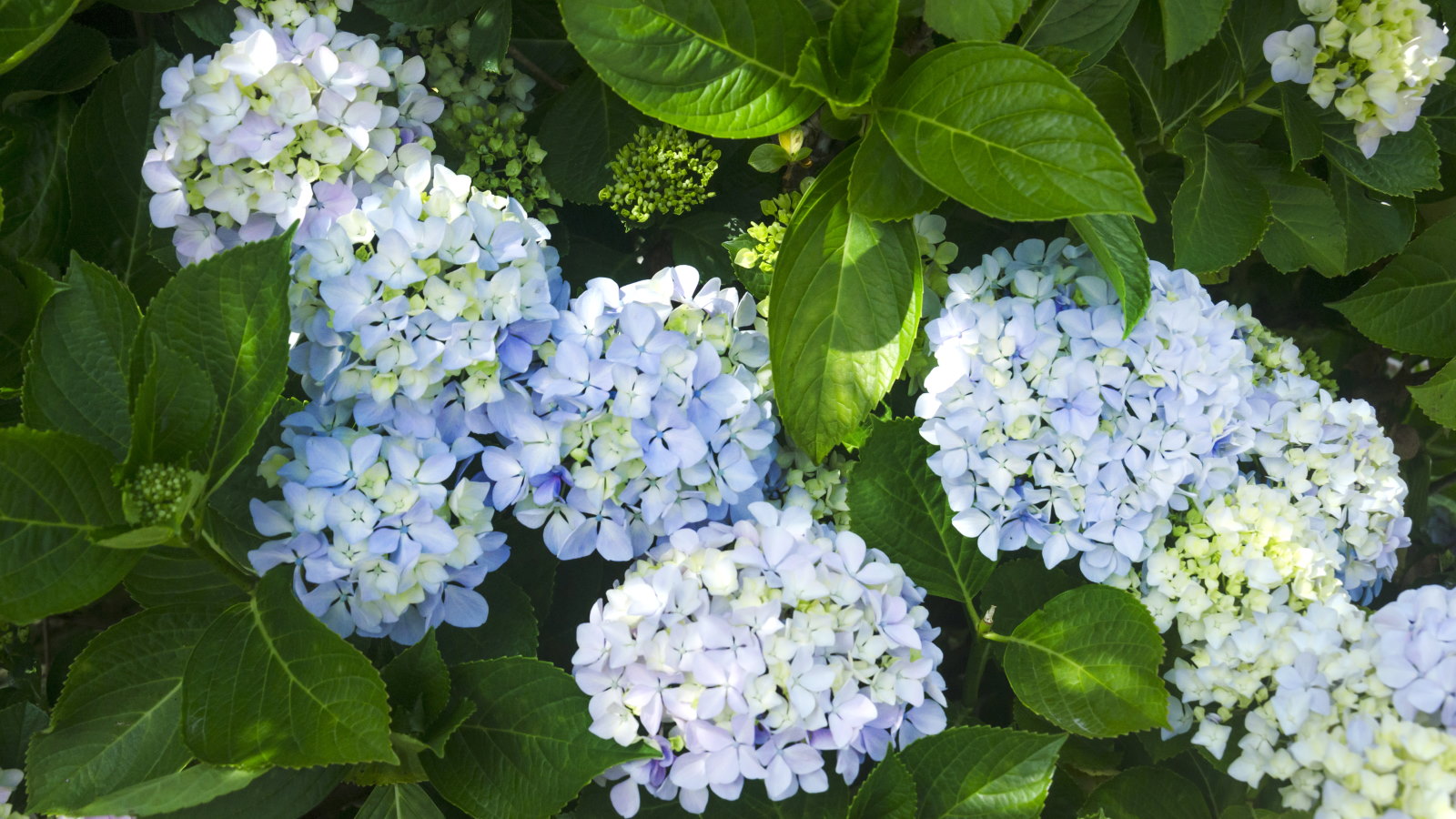
Let's kick off with the good news that mophead hydrangeas are very simple to grow and do not require lots of pruning. You can get a fantastic display of large and spectacular blooms year after year with only a light trim.
Mophead hydrangeas (Hydrangea macrophylla) will thrive in a shady spot protected from intense summer sun - especially important in warmer climates - and when kept watered in dry spells.
The pruning required is minimal, though they will perform at their best with some attention each year. It means knowing when and how to prune hydrangeas is important to keep the shrub healthy and guarantee a great display of blooms.
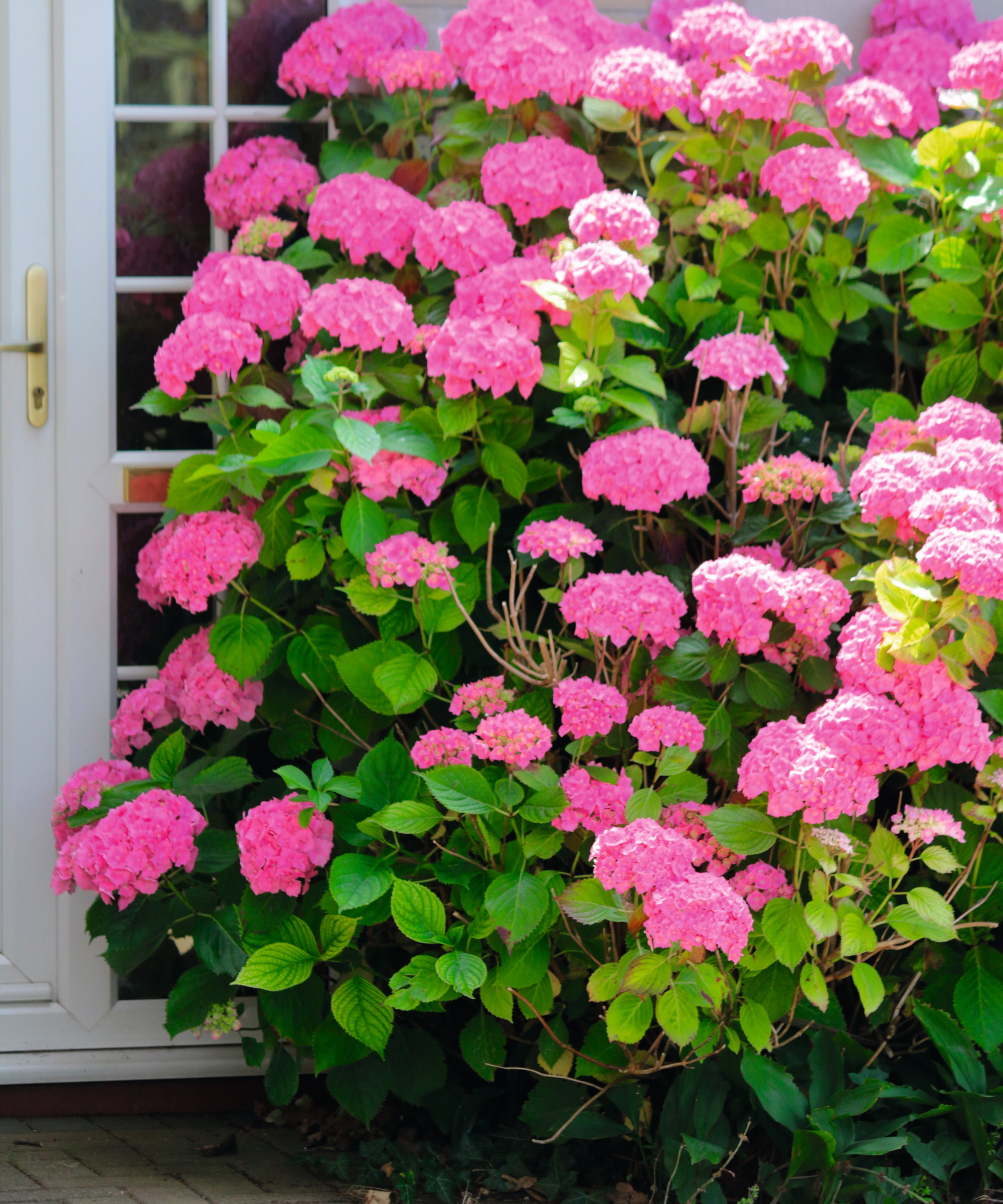
Pruning mophead hydrangeas correctly means a great display of blooms every year
A guide to pruning mophead hydrangeas
Mopheads are hugely popular hydrangea varieties and the most common choice for anyone landscaping with hydrangeas. This is because the shrubs are easy to maintain, reliably bloom, and are fast-growing. The ease of care extends to pruning, as mophead hydrangeas can perform well with very little pruning.
When to prune a mophead hydrangea
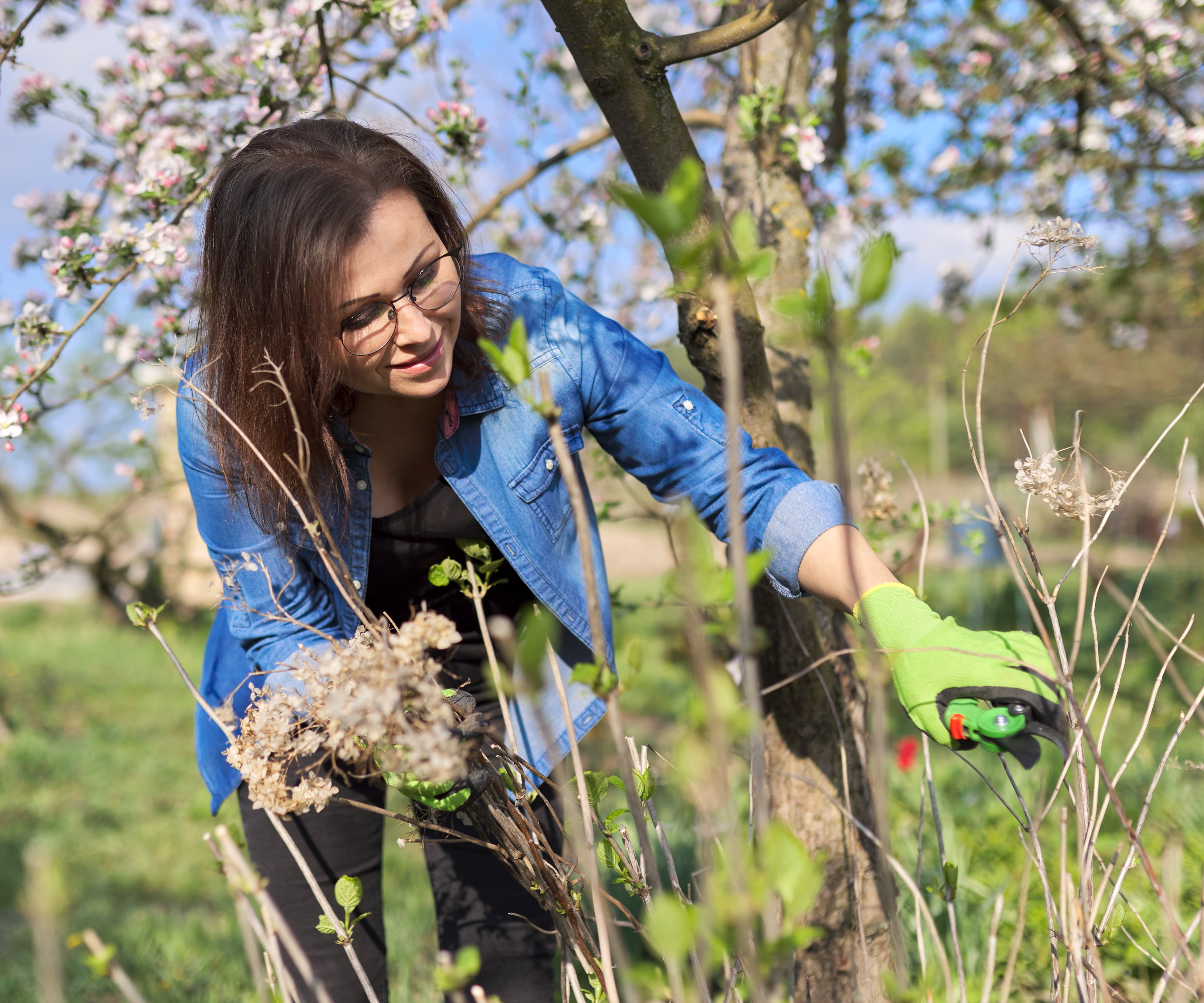
Knowing when to prune mophead hydrangeas keeps shrubs healthy
Many hydrangea pruning mistakes occur as differing types of hydrangea are trimmed at different times of year, due to whether they flower on new wood or old wood.
Mophead hydrangeas predominantly flower on old wood - the buds are formed the previous year. However, newer cultivars of mophead hydrangeas can also form buds on new growth. So, how does that affect when to prune a mophead hydrangea?
The best time to prune a mophead hydrangea is late winter or early spring, just before the new growth begins and the leaves are starting to open. A light trim at this time can shape the shrub without removing the buds and, as it is a deciduous shrub, you get a good look at the form when it is bare. Leaving last year’s faded blooms in place over winter also protects the buds from getting damaged by the winter frosts.
Design expertise in your inbox – from inspiring decorating ideas and beautiful celebrity homes to practical gardening advice and shopping round-ups.
Certain other hydrangeas that flower on old wood are pruned after they bloom in summer - such as when you prune an oakleaf hydrangea. However, as mophead hydrangeas require only a light touch when trimming, they can be safely pruned in spring without affecting that season’s flowering.
The timing for pruning mophead hydrangeas is more similar to pruning Annabelle hydrangeas or cutting back limelight hydrangeas - both types that flower on new wood. Such shrubs are best pruned in late winter or early spring just before the buds break.
Heading out to prune mophead hydrangeas in summer or fall would be a pruning mistake. Pruning late in summer risks removing the flower buds that will carry next year’s flowers and trimming in fall can also be risky. Pruning in fall stimulates the growth of new shoots, which will be damaged by frosts, and removes buds - so do not cut back the hydrangea in fall.
How to prune a mophead hydrangea
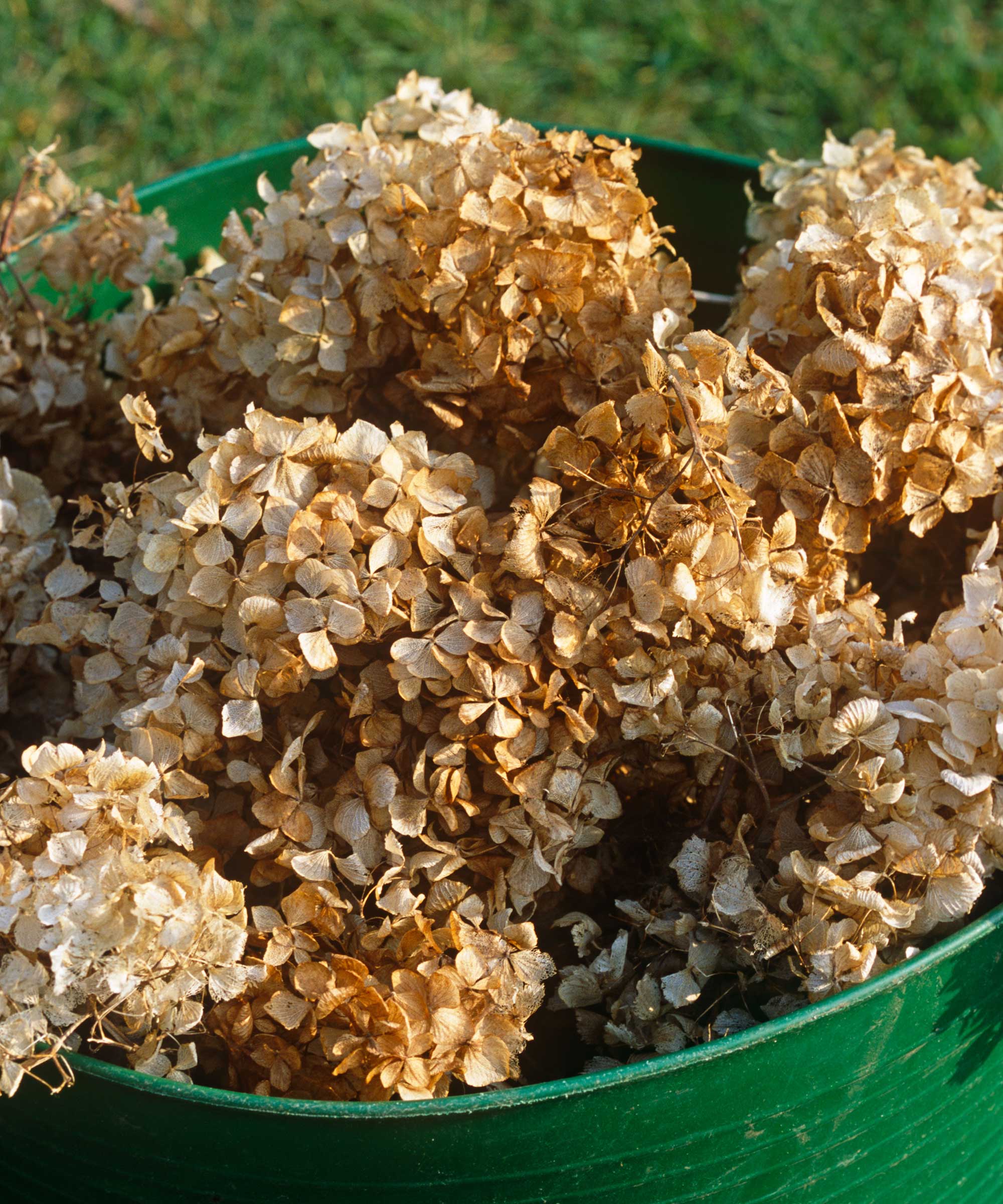
The old flowerheads from pruning mophead hydrangeas can be used to make compost - if they are disease-free
The steps to prune a mophead hydrangea are very simple. The flowering shrubs require merely a light trim annually to keep them healthy and put on a great display.
Take a pair of clean and sharp pruning shears and start with deadheading all the old flower heads, cutting carefully just above a pair of buds and taking care not to remove any other flower buds. Trimming each stem back to the first set of opening leaves may be time-consuming, but it is worth it for a fantastic flowering display.
Examine the mophead hydrangea and remove any dead, damaged, diseased, or crossing stems back to the base. Removing deadwood and weak stems will help to improve air circulation throughout the shrub.
Those two steps outlined above are often sufficient. If you have an older mophead hydrangea, removing one or two of the oldest stems to the base can rejuvenate the shrub. Large stems growing in unwanted directions, such as over paths or too low to the ground, can be completely removed.
A neglected mophead hydrangea can be cut completely to the base, however, it means a year without flowers. A more measured approach is to prune one-third of the oldest stems each year as part of a longer-term rejuvenation plan.
FAQs
Should you deadhead mophead hydrangeas?
Deadheading mophead hydrangeas is not required throughout the flowering season. Whereas deadheading roses and other summer-flowering plants are recommended to continue the display of blooms, deadheading mophead hydrangeas won’t encourage another flush of flowers.
It is better to leave the blooms in place until spring, not only do dried hydrangea blooms add to a winter garden but the heads protect the buds from cold. If you do not like the look of brown hydrangea flowers, you can remove them at the end of summer.
Knowing when to prune hydrangeas is vital to keep these fantastic shrubs thriving and healthy. Whether you have shrubs as part of your flower bed ideas or grow hydrangeas in pots, always make sure you know the type of hydrangea before heading out with the garden tools to prune. It can save you from making a mistake that sees you miss out on a year of glorious flowers or even puts the health of the hydrangea at risk.

Drew has worked as a writer since 2008 and was also a professional gardener for many years. As a trained horticulturist, he worked in prestigious historic gardens, including Hanbury Hall and the world-famous Hidcote Manor Garden. He also spent time as a specialist kitchen gardener at Soho Farmhouse and Netherby Hall, where he grew vegetables, fruit, herbs, and cut flowers for restaurants. Drew has written for numerous print and online publications and is an allotment holder and garden blogger. He is shortlisted for the Digital Gardening Writer of the Year at the 2025 Garden Media Guild Awards.
